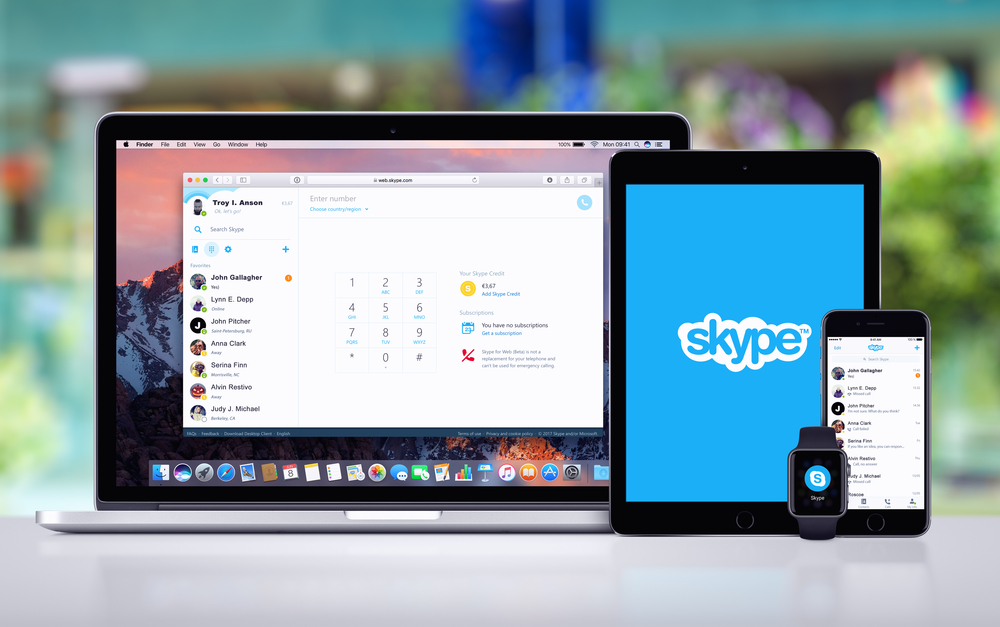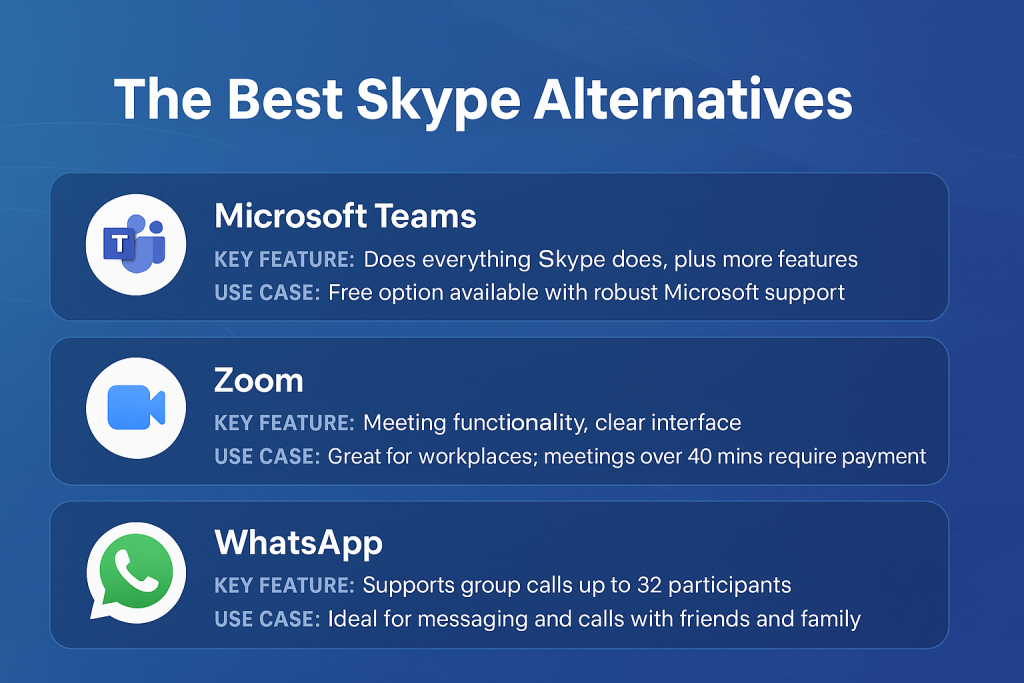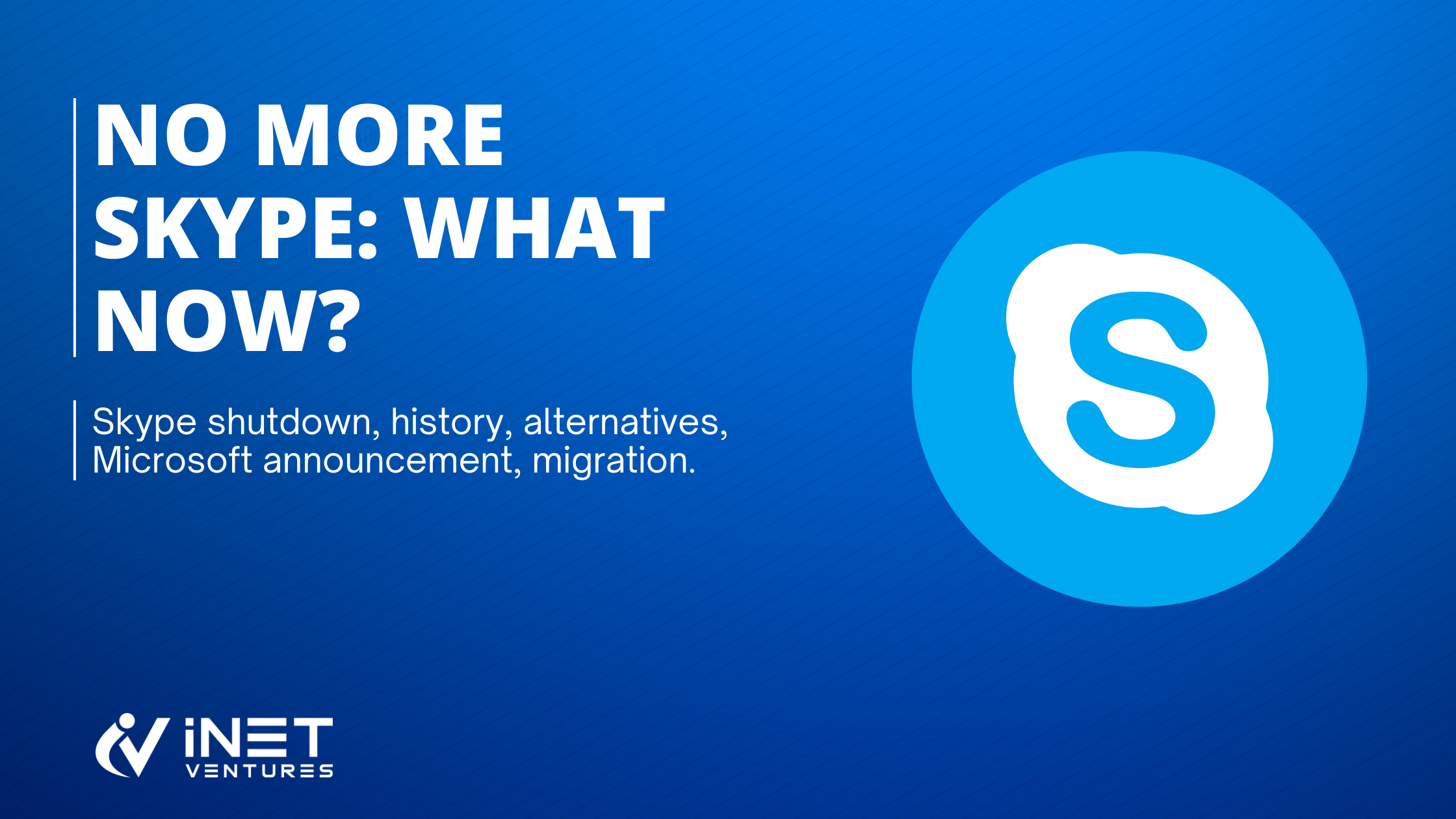Recently, Microsoft announced that it will be shutting down Skype after almost twenty-two years in operation. It is – and we don’t say this lightly – the end of an era.
If you’ve ever used Skype, you’ll know just how critical it’s been over the past couple of decades for businesses and individuals wanting to communicate with each other, but it’s fair to say that the app’s time has come.
With that in mind, we thought now would be the perfect time to take a look back at Skype. We’ll tell you when it’s shutting down, briefly touch on its history, and let you know about some of the alternatives you could be using. Let’s get started!
When is Skype shutting down?
As revealed by Microsoft, Skype will be shutting down on May 5th. The app will remain operational until that date, so if you’re still using it to chat to colleagues or friends, you’ll have some time to migrate.
After May 5th, though, you won’t be able to open up Skype and log into it anymore, nor will you be able to download the app if you don’t have it on your system yet.
It remains a possibility that enthusiasts will engineer some kind of solution to get older versions of Skype up and running, but for now, it’s best to start moving away from Skype if you haven’t already.
In addition, you’ll no longer be able to use any of Skype’s paid features, including subscriptions, Skype Credit, and anything else you need to use real currency to utilise on the platform.
A brief history of Skype
Skype got its start all the way back in 2003, when a group of European entrepreneurs got the idea to create a low-cost alternative to regular voice calling by using peer-to-peer systems.
The first version of Skype was released in summer 2003, having spent some time in alpha testing that year. It went on to become one of the most popular voice calling apps on the market.
If you’ve ever wondered why the app is called “Skype”, the name actually originates from the phrase “sky peer-to-peer”, because Skype uses tech that allows people to call one another wirelessly.
The Swedish entrepreneurs who started Skype as a company decided to shorten that name, but “Skyper” wasn’t available as a domain, and so they decided to drop the “r”. The rest is history!
In 2005, Skype introduced video calling, which is arguably the feature for which it would become best known (although users would, of course, continue to use Skype for voice calling throughout its lifetime as well).
That same year, the auction website eBay acquired Skype for an eye-watering $2.5 billion, which works out at around $4 billion in today’s money.
However, Skype was subsequently sold to an interested group of private equity firms, with eBay essentially seeming to believe that it overvalued the company and that purchasing it wouldn’t pay off in the long run.
Over the next few years, Skype’s value would continue to climb, arguably showing that eBay’s decision wasn’t the smartest one the company has ever made.

Microsoft would go on to buy Skype in 2011, spending $8.5 billion on the company and its app. That’s about $13.69 billion in today’s money, which is more than gaming company Take-Two paid for mobile giant Zynga.
The app continued to enjoy significant popularity until 2020, at which point the COVID-19 pandemic ensured that many company employees were stuck at home, unable to communicate with one another face-to-face.
Such a situation might have seemed ideal for Skype, but in fact, the app found itself falling by the wayside in terms of popular support, with alternatives like Zoom and Microsoft Teams taking over Skype’s responsibilities for many workplaces.
With Microsoft looking to emphasise its own Teams app over Skype, Teams gradually became the app Microsoft wanted to ensure companies and employees were using, with Skype increasingly de-emphasised by the company.
That’s the sequence of events that has led us to where we are today, with Teams about to take over from Skype.
Indeed, Microsoft itself says it’s retiring Skype in order to “focus on Microsoft Teams”, emphasising features like meeting hosting, calendar management, and communities as draws for Teams over Skype.
Skype in Figures
| Statistic | Value |
|---|---|
| Launch Year | 2003 |
| Founders | Niklas Zennström & Janus Friis |
| Initial Users (2004) | 1 million |
| Users by 2010 | 663 million |
| Microsoft Acquisition | $8.5 billion (2011) |
| Peak Monthly Active Users | 300 million (2015) |
| Daily Active Users (2017) | 40 million |
| Highest Concurrent Users | 50 million (March 2020, COVID-19 peak) |
| Video Call Percentage | 50% of all Skype calls (2014) |
| Skype-to-Skype Minutes (2013) | 2 billion per day |
| Mobile App Downloads | Over 1 billion (Google Play Store) |
| Languages Supported | 108 |
| Active Countries | 180+ |
| Most Used Feature | Video Calling & Messaging |
What are the best Skype alternatives?
Naturally, since Skype is shutting down, you’ll probably be looking for other apps you can use instead. Happily, there are a range of Skype alternatives available. Here are some of the best!
Microsoft Teams
It probably won’t come as a surprise that Microsoft Teams is one of the best Skype alternatives out there.
It does everything Skype does, including voice and video calling, messaging, and file sharing, but it also has extra features and enjoys more robust support on Microsoft’s part.
There’s even a free version available if you don’t feel like paying for any of the app’s extra features.
Zoom
Zoom is the app that most people will point to if you ask them what the most important tool for continuing to work from home during the pandemic was.
As a Skype alternative for you and your workplace, it offers meeting functionality, messaging, and more, although you will need to pay if you want to enjoy meetings for longer than 40 minutes at a time.
Still, Zoom has a clean, clear interface, and it’s great for workplaces that don’t mind throwing a little extra cash around to get a solution that works.
If you’re using Skype predominantly for its messaging and voice calling features, then WhatsApp actually serves as a pretty great alternative.
We’re sure that we don’t need to tell you what exactly WhatsApp is; you’re probably already using it to chat to your friends and family, and it can replace Skype pretty handily on that front.
You can even hold group calls on WhatsApp; they support up to 32 participants, and unlike Zoom, there’s no time limit on the call, making the app ideal for longer company chats.

Conclusion
It’s always sad when legacy software finally says goodbye, and since Skype is one of the oldest apps many will be able to remember, this feels especially poignant.
Still, with Microsoft Teams and other apps picking up the torch, there are still plenty of apps you can use to enhance your productivity and keep in touch with your colleagues.
All that remains is for us to say “goodbye, Skype – you won’t be forgotten”!
As the founder of iNet Ventures, James deeply understands the world of SEO, link building, growth, and strategy. After achieving remarkable results for agencies and websites, his approach combines industry knowledge with forward-thinking tactics, which embark on analytical tools and AI.


